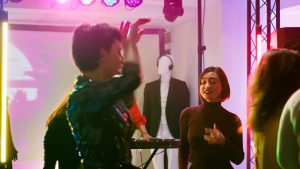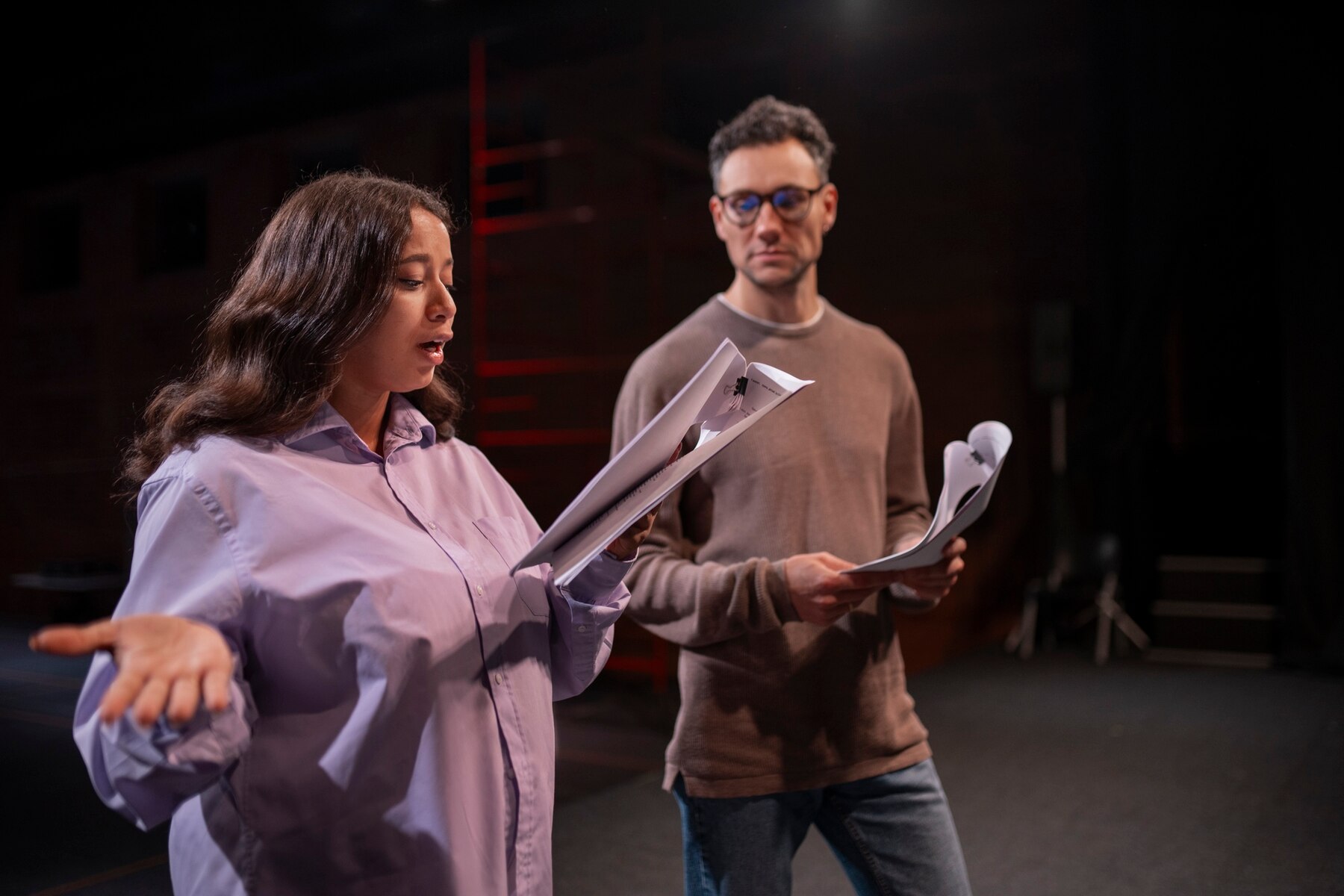The world of live performances has always been a dynamic and evolving space. From theater and concerts to dance recitals and stand-up comedy, live events have shaped how we experience culture. Yet, in recent years, a noticeable shift has occurred. The pandemic accelerated change, forcing the entertainment industry to explore new ways to connect with audiences. But now, even as in-person events return, it seems we’re on the brink of entering a new era in live performances. So, what exactly is changing, and how are these transformations impacting artists and audiences alike?
In this article, we’ll dive into the shifting landscape of live performances, exploring technological innovations, changes in audience expectations, and the broader cultural movements shaping the future of entertainment. Buckle up as we explore what’s next for live events in this thrilling new era.
The Rise of Hybrid Experiences: Virtual Meets Reality
One of the most notable shifts in the live performance world is the rise of hybrid experiences. What was once a divide between virtual and physical events is now blending into something new and exciting. The pandemic might have forced most events online, but what it also did was spark a cultural shift toward digital integration. Virtual concerts, theater productions, and even comedy shows became the norm, and it quickly became clear that audiences craved more than just a one-dimensional experience.
Hybrid events—where audiences can choose to attend in person or virtually—are now becoming a popular way to keep live performances accessible to all. Artists are experimenting with multi-platform engagement, ensuring their work reaches a global audience, while still maintaining the intimacy of in-person events. For example, live-streamed concerts allow fans from around the world to tune in, while offering exclusive perks for those attending the physical event, such as backstage access or meet-and-greet opportunities.
This evolution not only provides more flexibility for audiences but also creates opportunities for artists to expand their reach. Whether it’s a concert in a small venue or a large-scale theater production, integrating virtual elements allows performers to connect with fans who might not otherwise have had the chance to attend.
Immersive Technology: Bringing the Spectacle to Life
Technology has always played a crucial role in live performances, but recent advancements are taking things to a whole new level. We’re not just talking about improved lighting or sound systems—immersive technology is revolutionizing how we engage with performances.
Take, for example, the use of augmented reality (AR) and virtual reality (VR) in live shows. Imagine attending a concert where the band isn’t just performing on stage—they’re performing within a digitally-enhanced world where the audience can interact with the environment. This type of immersive experience blurs the line between reality and fantasy, providing an entirely new way to enjoy performances.
In the theater, productions are increasingly incorporating holographic technology and 3D projections, creating visually stunning effects that can transform a simple scene into a breathtaking spectacle. From realistic projections of far-off landscapes to interactive sets, the ability to experience performances in ways never before possible has captured the imagination of audiences worldwide.
This shift in technology is not just about spectacle—it’s about engagement. With immersive tech, performances can become more participatory, allowing audiences to engage with the action and even influence the outcome in some cases. This creates a more personalized experience, catering to a generation that craves instant gratification and hands-on interaction.
The Evolution of Audience Expectations: A Desire for Authenticity
In today’s fast-paced digital world, audiences have developed new expectations about the content they consume. No longer are they satisfied with cookie-cutter performances—they want something that feels personal, authentic, and unique. This desire for authenticity is one of the driving forces behind the transformation of live performances.
Audiences now expect a deeper connection with the performers themselves. It’s no longer enough to simply watch a concert or play; they want to feel as though they’re part of the experience. Social media has played a significant role in this shift, as fans are able to interact directly with their favorite artists in real-time. Platforms like Instagram, TikTok, and Twitter allow performers to share behind-the-scenes moments, offer glimpses into their creative process, and even interact with fans during live events.
This level of interaction has given rise to a new wave of live performances, where audience participation is encouraged. From live-streamed Q&A sessions to interactive voting that influences the course of the performance, fans are becoming an integral part of the show. Artists who embrace this shift are not only fostering deeper connections with their fans but also gaining valuable feedback that can shape future performances.
Moreover, there’s been a push towards more intimate settings. Large-scale concerts and theater productions are giving way to smaller, more personal performances. This shift reflects a desire for authenticity over spectacle, where audiences crave a genuine, unfiltered connection with the performers. It’s a movement toward more organic, raw experiences that tap into emotions and create lasting memories.

Sustainability in Live Performances: An Industry Shift
As global awareness of climate change and environmental issues grows, the live performance industry has also begun to address sustainability. In fact, it’s becoming a central theme in the evolution of live events. Concerts, festivals, and theater productions are being reimagined with sustainability in mind, and artists and event organizers are taking steps to minimize their carbon footprints.
For example, many large-scale festivals are shifting to eco-friendly practices, such as reducing single-use plastics, utilizing renewable energy sources, and incorporating zero-waste policies. On the production side, materials used for set design and costumes are being sourced sustainably, and energy-efficient technologies are being employed to reduce energy consumption.
Beyond the events themselves, the global supply chain for live performances is also being scrutinized. Artists are exploring ways to reduce waste in the production of merchandise, while venues are looking at ways to cut down on their energy use and improve their sustainability practices.
This drive toward sustainability is not only a response to public demand but also a recognition that the entertainment industry has a responsibility to the planet. Fans are increasingly looking to align with brands and artists that share their values, and this shift is likely to become a defining feature of the next generation of live performances.
The Future of Live Performances: What’s Next?
The future of live performances is bright, and the changes we’re witnessing today are only the beginning. As technology continues to evolve and audience expectations shift, we can expect even more exciting innovations in the years to come.
For example, AI-generated performances could become a regular feature in live events. Imagine a concert where the music is created in real-time by artificial intelligence, or a theater performance that adapts based on audience feedback. These possibilities are no longer far-fetched—artists and technologists are already exploring these ideas.
Furthermore, as virtual and augmented reality technologies improve, we may see entire performances created within digital worlds, where the audience can interact with the environment as much as the performers. This could lead to entirely new forms of storytelling and entertainment, where the boundaries between the physical and digital worlds are blurred even further.
But even with all these technological advances, one thing remains clear: the essence of live performances—connection, emotion, and shared experience—will always be at the heart of the art form. No matter how much technology evolves, the desire for human connection and the magic of experiencing art in real-time will never fade.
Conclusion: Embracing Change for the Future
The live performance world is undergoing a profound transformation, and while the industry faces challenges, it also has a tremendous opportunity to reshape itself in exciting new ways. From hybrid experiences and immersive technology to more sustainable practices and the rise of authentic connections, we are indeed moving toward a new era of live performances.
As artists, organizers, and audiences continue to embrace these changes, the future of live entertainment looks brighter than ever. It’s an era defined by innovation, inclusivity, and a deeper connection to the art form. And for those of us lucky enough to be part of it, there’s no telling what incredible experiences lie ahead.
So, what do you think? Are you ready to step into the next chapter of live performances and see where this thrilling journey takes us?
